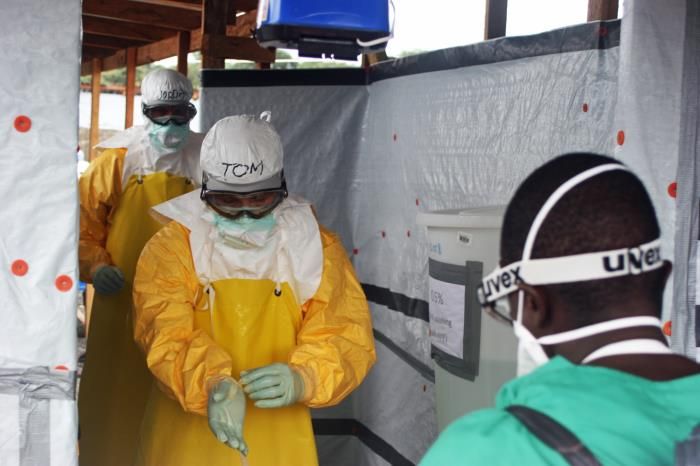Liberia's Ebola Epidemic Could End by Summer, Study Predicts

The Ebola outbreak in Liberia could be largely brought to an end by June — if the country stays on track with getting a high percentage of the people who are ill to hospitals, a new study predicts.
Researchers found that if 85 percent of people with Ebola in Liberia are hospitalized, transmission of the disease could be nearly stopped between March and June of this year.
However, if Liberia's hospitalization rate remains where it was last summer, at around 70 percent, then transmission of the disease would "most certainly continue into the second half of 2015," the researchers said. The actual hospitalization rate in Liberia right now is not known, but it is likely close to 85 percent, said study researcher John Drake, an associate professor at the University of Georgia.
"The people and government of Liberia, foreign governments, and non-governmental organizations have done a monumental job in reducing transmission [of Ebola]. What is required now is maintaining these gains," Drake told Live Science. [The 9 Deadliest Viruses on Earth]
The researchers used information from past Ebola outbreaks to estimate the level of Ebola transmission that typically occurs in hospitals, in the community and at funerals. Then, the researchers fine-tuned their model based on data gathered last summer, during the current Ebola outbreak. That information included the number of new cases, and changes in public health efforts, like the addition of 300 new hospital beds in the region last August.
The study also took into account the situations in which Ebola is known to spread (in the hospital, during nursing care or at burials), the locations where people are treated (in the hospital or at home), and the time it took for the country to build up hospital capacity and adopt safe burial practices.
Sign up for the Live Science daily newsletter now
Get the world’s most fascinating discoveries delivered straight to your inbox.
In other words, the model "captures all the things we think to be most important [for transmission], and ignores the rest," Drake said.
However, the researchers noted, they were not able to take into account some factors that may have small effects on Ebola transmission. For example, the model assumed the number of health care workers was proportional to how many people were sick, but in reality, the number of workers may vary if people become exhausted and can't work anymore, or are moved around, the researchers said.
The study is published today (Jan. 13) in the journal PLOS Biology.
As of Jan. 10, there have been more than 21,000 cases of Ebola during the current outbreak, and more than 8,000 people have died of the disease, in Liberia, Guinea and Sierra Leone, according to the Centers for Disease Control and Prevention.
Follow Rachael Rettner @RachaelRettner. Follow Live Science @livescience, Facebook & Google+. Original article on Live Science.

Rachael is a Live Science contributor, and was a former channel editor and senior writer for Live Science between 2010 and 2022. She has a master's degree in journalism from New York University's Science, Health and Environmental Reporting Program. She also holds a B.S. in molecular biology and an M.S. in biology from the University of California, San Diego. Her work has appeared in Scienceline, The Washington Post and Scientific American.










